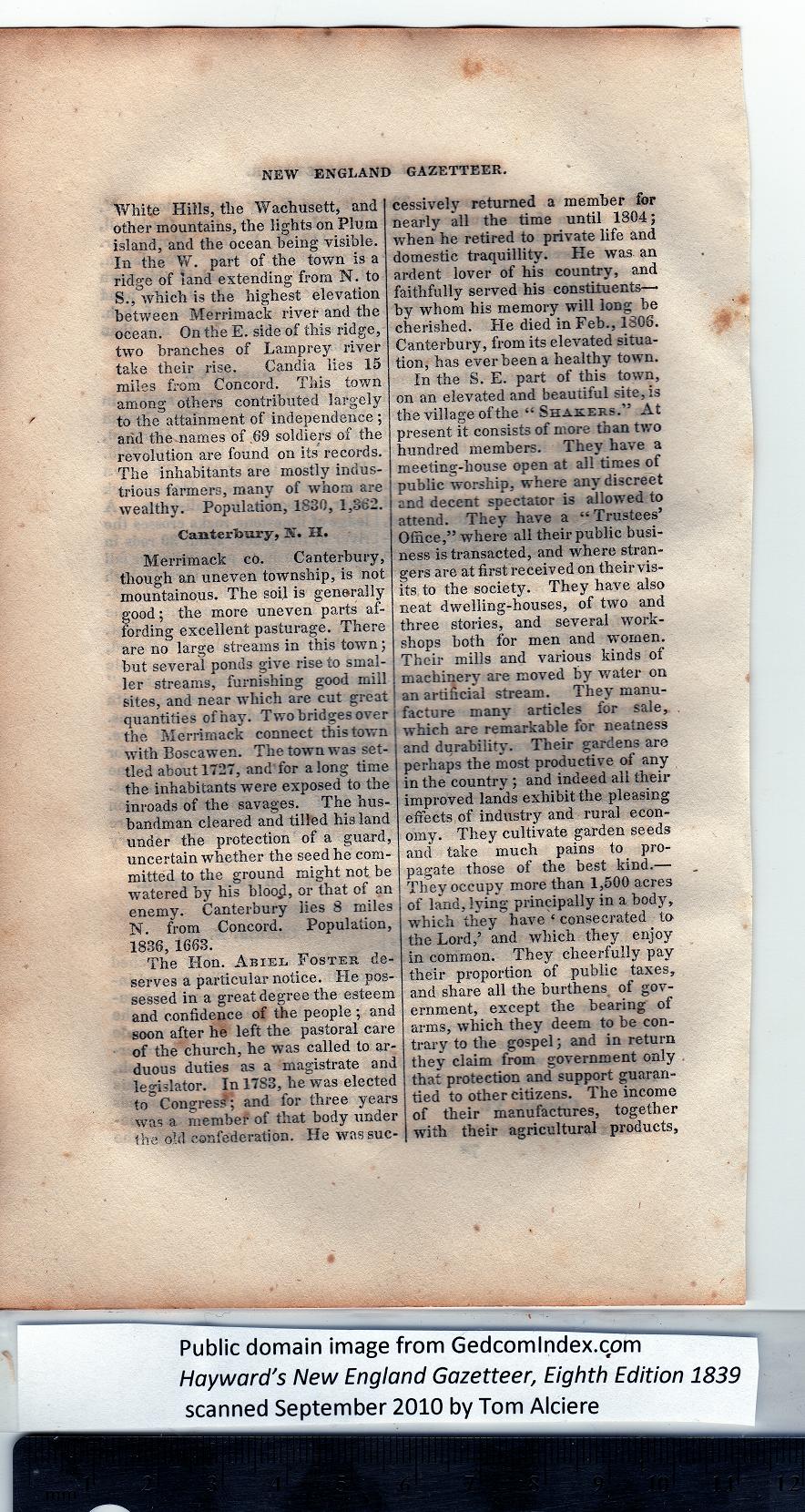|
White Hills, the Wachusett, and
other mountains, the lights on Plum
island, and the ocean being visible.
In the W. part of the town is a
ridge of land extending from N. to
S., which is the highest elevation
between Merrimack river and the
ocean. On the E. side of this ridge,
two branches of Lamprey river
take their rise. Candia lies 15
miles from Concord. This town
among others contributed largely
to the attainment of independence ;
arid the names of .69 soldiers of the
revolution are found on its records.
The inhabitants are mostly indus-
trious farmers, many of whom are
wealthy. Population, 1S30, 1,362.
Canterbury, X. II.
Merrimack co. Canterbury,
though an uneven township, is not
mountainous. The soil is generally
good; the more uneven parts af-
fording excellent pasturage. There
are no large streams in this town;
hut several ponds give rise to smal-
ler streams, furnishing good mill
sites, and near which are cut great
quantities of hay. Two bridges over
the Merrimack connect this town
with Boscawen. The town was set-
tled about 1727, and for a long time
the inhabitants were exposed to the
inroads of the savages. The hus-
bandman cleared and tilled his land
under the protection of a guard,
uncertain whether the seed he com-
mitted to the ground might not be
watered by his bloc$, or that of an
enemy. Canterbury lies 8 miles
N. from Concord. Population,
1836, 1663.
The Hon. Abiee Foster de-
serves a particular notice. He pos-
sessed in a great degree the esteem
and confidence of the people ; and
soon after he left the pastoral care
of the church, he was called to ar-
duous duties as a magistrate and
legislator. In 17S3, he was elected
to Congress; and for three years
was a member of that body under
the old confederation. He was suc-
cessively returned a member for
nearly all the time until 1804;
when he retired to private life and
domestic traquillity. He was an
ardent lover of his country, and
faithfully served his constituents—
by whom his memory will long he
cherished. Pie died in Feb., 1806.
Canterbury, from its elevated situa-
tion, has ever been a healthy town. |
In the S. E. part of this town,
on an elevated and beautiful site, is
the village of the “Shakers.” At
present it consists of more than two
hundred members. They have a
meeting-house open at all times of
public worship, where any discreet
end decent spectator is allowed to
attend. They have a “Trustees’
Office,” where all their public busi-
ness is transacted, and where stran-
gers are at first received on their vis-
its to the society. They have also
neat dwelling-houses, of two and
three stories, and several work-
shops both for men and women.
Their mills and various kinds of
machinery are moved by water on
an artificial stream. They manu-
facture many articles for sale,
which are remarkable for neatness
and durability. Their gardens are
perhaps the most productive of any
in the country ; and indeed all their
improved lands exhibit the pleasing
effects of industry and rural econ-
omy. They cultivate garden seeds
and take much pains to pro-
pagate those of the best kind.—
They occupy more than 1,500 acres
of land, lying principally in a body,
which they have ‘ consecrated to
the Lord,’ and which they enjoy
in common. They cheerfully pay
their proportion of public taxes,
and share all the burthens of gov-
ernment, except the bearing of
arms, which they deem to be con-
trary to the gospel; and in return
they claim from government only
that protection and support guaran-
tied to other citizens. The income
of their manufactures, together
with their agricultural products, |
